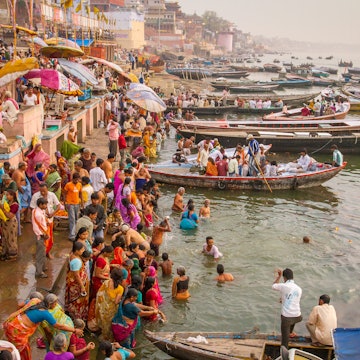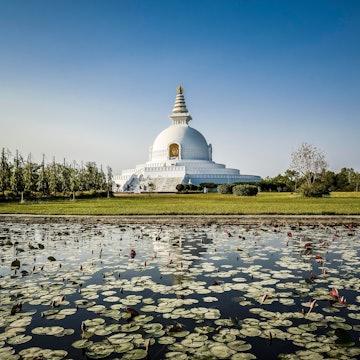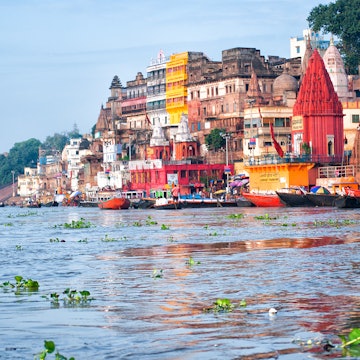

Pots of malaiyo – chilled, aerated milk – for sale in Varanasi, Uttar Pradesh. PradeepGaurs/Shutterstock
To eat in Varanasi is to taste tradition. To experience, bite by bite, the culture of one of the world’s oldest and most sacred cities.
As the spiritual heart of India and a center of Hinduism for thousands of years, Varanasi is a place where religion and ritual are part of daily life. These deep-rooted practices shape everything in the city, including its food. This means that you won’t just be eating delectable dishes (though they are certainly that) – for each plate represents traditions passed down for generations through age-old recipes, with food served on leaf plates and drinks sipped from clay pots.
Influenced by Hinduism, the cuisine here is mainly vegetarian – simple yet nuanced, humble yet full of character. As you wander through Varanasi’s maze-like alleys, you’ll be drawn in by the aroma of slow-cooked delicacies prepared in tiny kitchens that have turned out such fare for centuries.
From flavorful street food to quintessential traditional dishes and refreshing drinks, Varanasi is a paradise for gourmets. Here’s all you need to know about what – and where –to eat and drink in Varanasi.
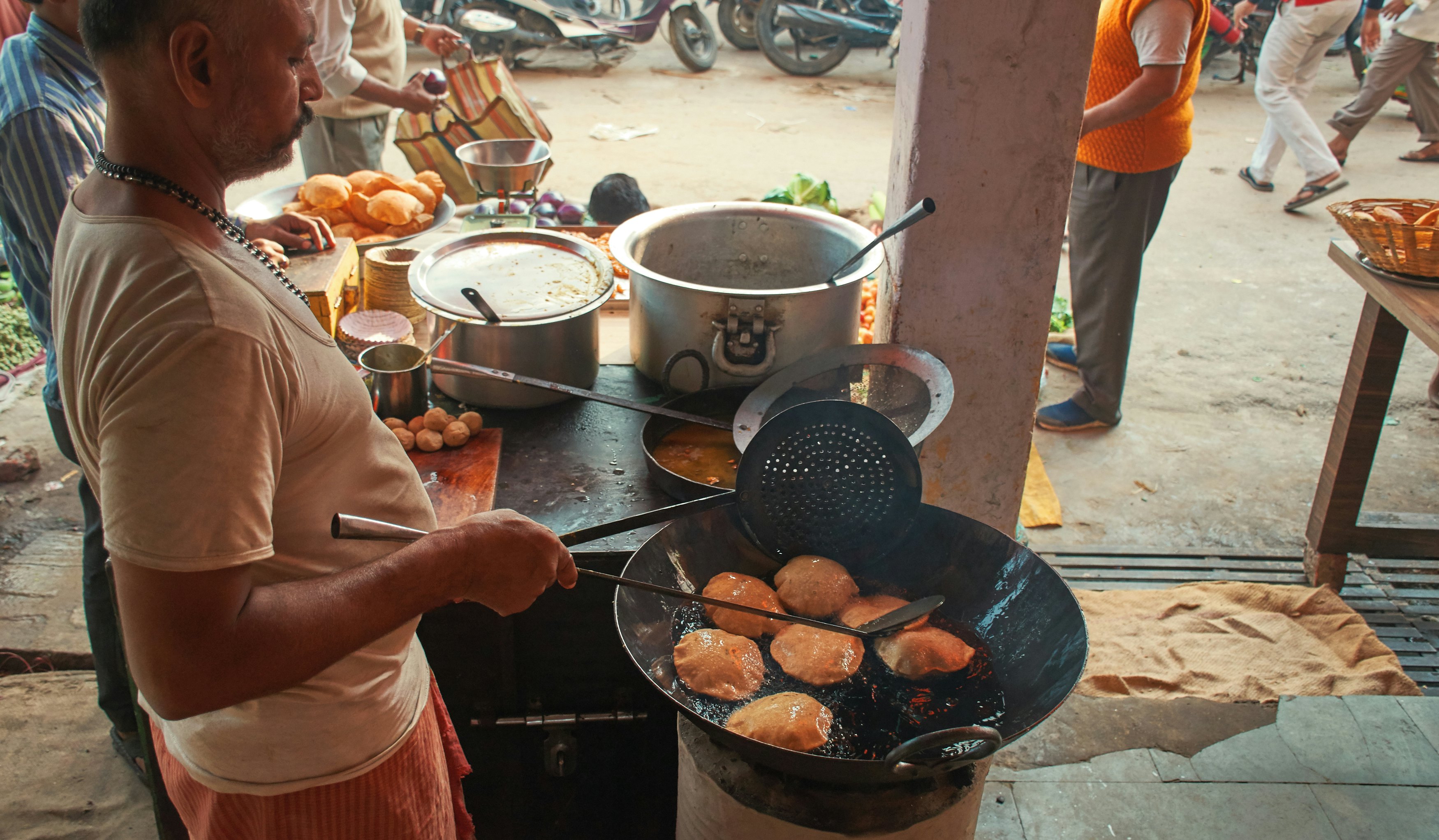
Begin your day with kachori sabzi and jalebi, the quintessential local breakfast
Start your day as Varanasi locals do, with kachori sabzi and jalebi. A kachori is a deep-fried, flaky bread typically filled with spiced lentils or potatoes – a pleasure to bite into. The accompanying sabzi is a flavorful and tangy vegetable curry that complements the richness of the kachori. Jalebi provides a sweet accent: made by piping a fermented flour batter into hot oil in a spiral shape, jalebis are fried until golden and immediately soaked in warm, fragrant sugar syrup. The result? A crisp covering with a syrupy, “melt-in-your-mouth” interior.
Where to try it: Head to the Ram Bhandar in the Thatheri Bazar area. This no-frills eatery has been dishing out this iconic combination for generations.
Feast on chooda matar, a signature Varanasi winter snack
A winter special, chooda matar is made with chooda (flattened rice) gently soaked until just tender, then tossed with a generous helping of matar (green peas), freshly harvested during the colder months. What really brings out the flavor is a tempering of aromatic Indian spices, curry leaves, ginger, and green chillies in ghee (clarified butter). A dash of fresh lemon juice and a sprinkle of chopped coriander leaves at the end add a refreshing zing and a burst of freshness. Locals often enjoy it with a topping of crumbled paneer (Indian cottage cheese) or grated coconut.
Where to try it: A lot of street vendors sell chooda matar; the version at Deena Chat Bhandar in Rama Pura is out of this world.
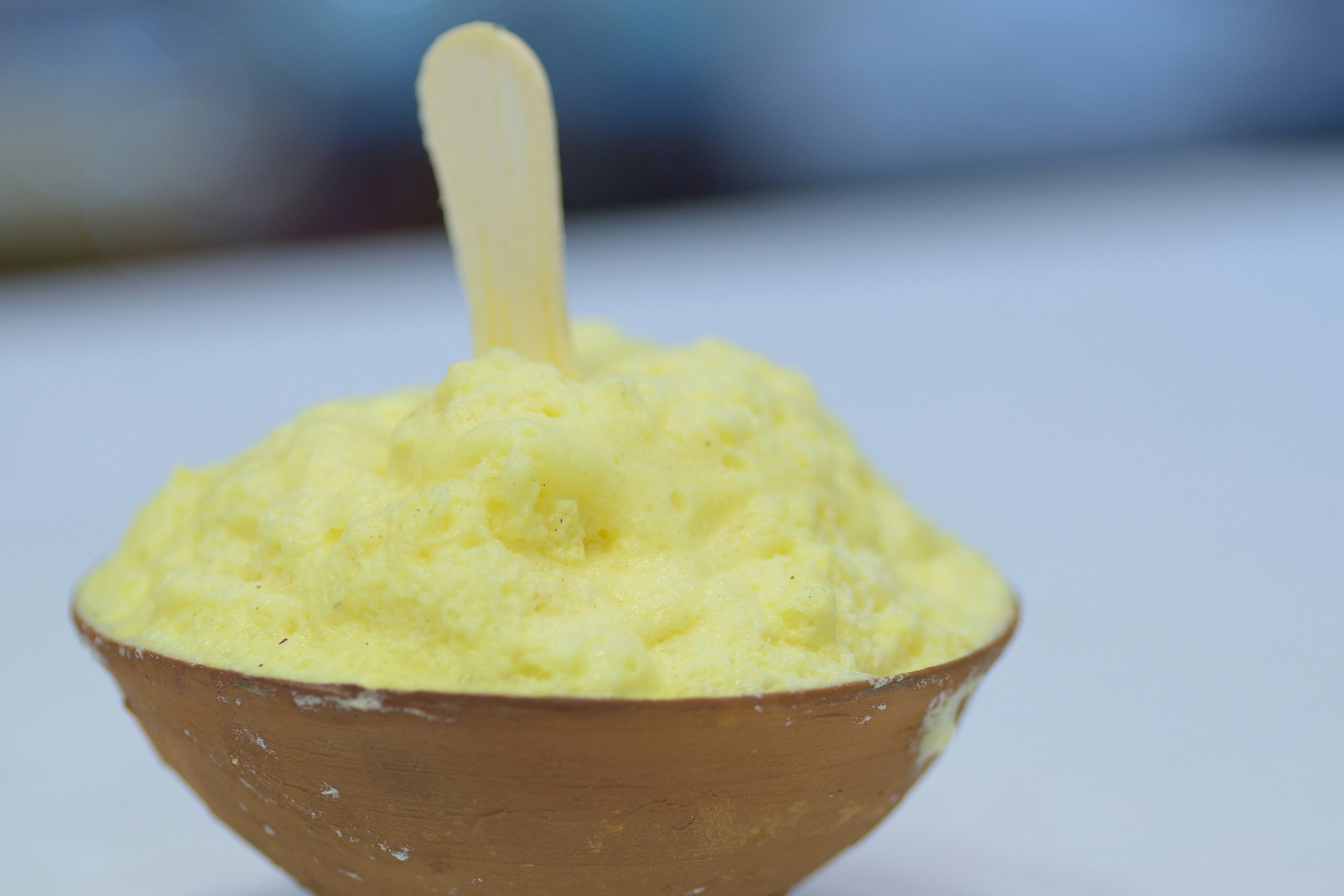
Enjoy the taste of a Varanasi winter with a spoonful of malaiyo
As the crisp winter air descends upon Varanasi, a unique and ethereal treat emerges: malaiyo. This light-as-air dessert is a frothy concoction made from churned milk that sits overnight outside, often infused with saffron and cardamom. The morning dew is crucial in giving malaiyo its signature cloud-like texture. It’s typically served in kulhads (small earthen cups) and garnished with chopped pistachios and almonds, adding crunch and nutty flavor to the milky sweetness.
Prepared only in the early hours from November to February, malaiyo is best enjoyed on a misty morning when the air is crisp and the streets are slowly coming to life.
Where to try it: Wander through the alleys of Chowk or Vishwanath Gali early in the morning and you’ll spot many vendors selling malaiyo from large brass pots. We also recommend Shreeji Sweets & Milk in Choukhamba and Markandey Sardar in Ghasi Tola near Dashashwamedh Rd.
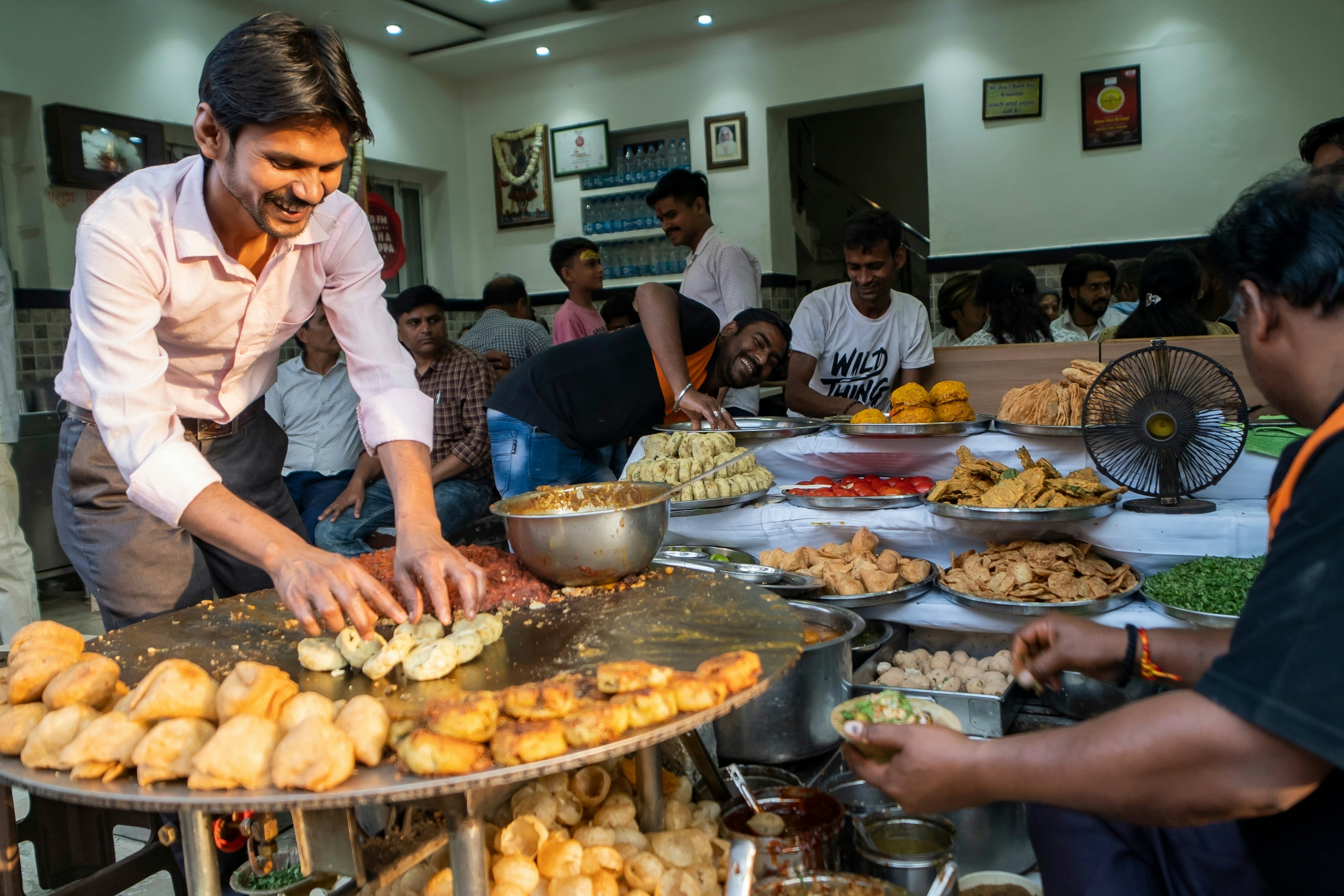
Tantalize your taste buds with a fiery tamatar chaat
Tamatar chaat is a classic street-food staple in Varanasi. While the name translates to “tomato snack,” don’t expect a salad. Instead, ripe tomatoes get mashed and cooked with a medley of bold Indian spices, green chillies and ginger; mixed with boiled potatoes; and finished with a crunchy topping of sev (crisp chickpea flour noodles), fresh coriander and a squeeze of lime. Served hot in small clay bowls, this dish is a riot of contrasting flavors and textures. The result? An intense, lip-smacking treat.
Where to try it: In Godowlia, Kashi Chat Bhandar has been making tamatar chaat and other savory treats for over 70 years.
Build up an appetite for baati chokha, a rustic culinary staple of Varanasi
Baati chokha is a hearty, rustic dish from eastern Uttar Pradesh and Bihar – and an integral part of Varanasi’s traditional cuisine. The recipe combines baati (dense, round wheat-flour dumplings baked on a charcoal griddle for a smoky flavor) with chokha (a mashed preparation of roasted eggplant, tomato and boiled potatoes mixed with mustard oil, garlic, green chillies and coriander). The baatis are typically dipped in ghee (clarified butter) before serving, giving them a rich profile that contrasts beautifully with the sharp flavors of the chokha. Eaten with raw onion and green chilli on the side, this is comfort food at its most essential.
Where to try it: Make your way to Baati Chokha Restaurant, where you will be served on leaf plates for added authentic touch.
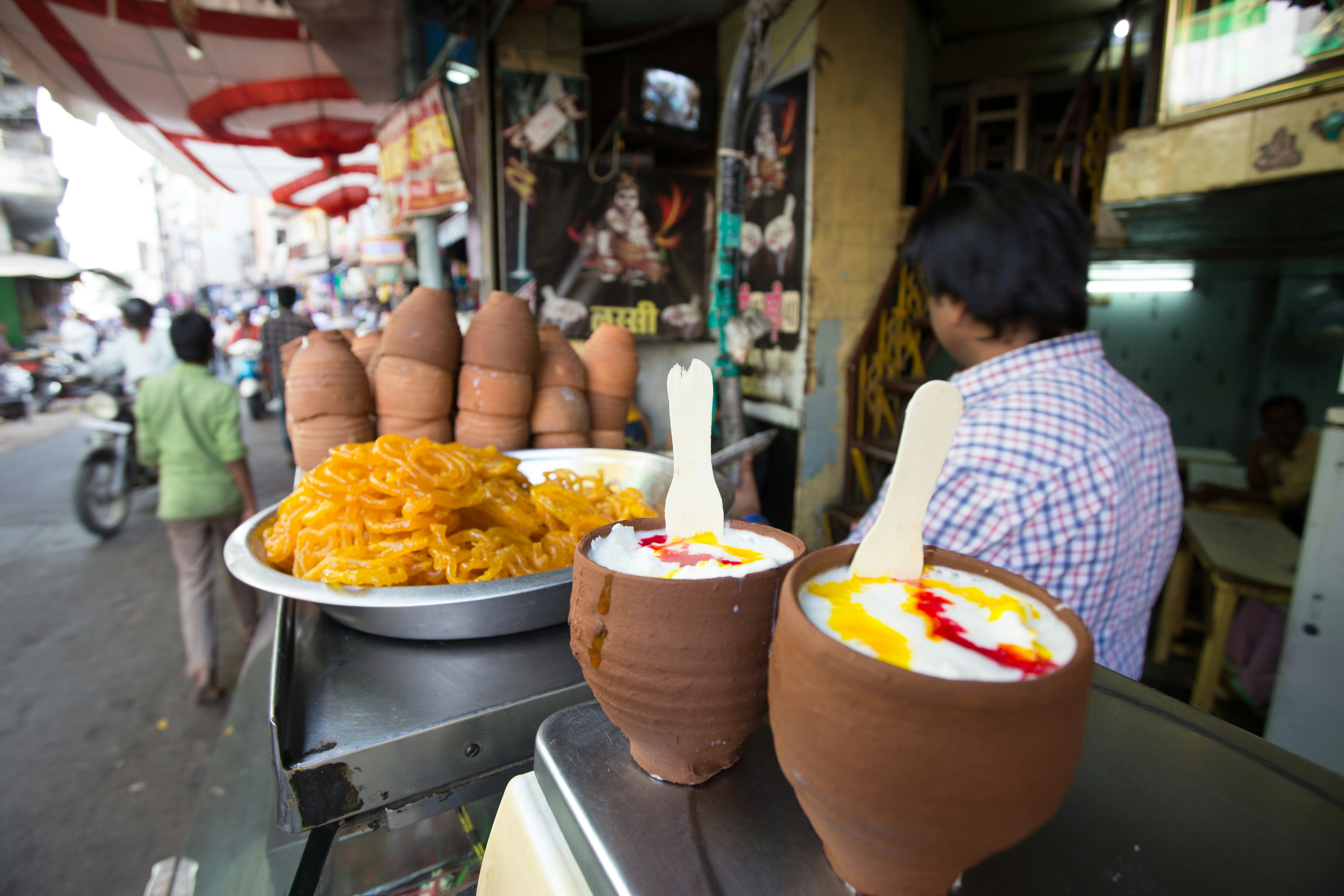
Cool off with a creamy lassi
No visit to Varanasi is complete without sipping a lassi – a creamy, yogurt-based drink made with milk and a generous dose of sugar, topped up with a dollop of fresh cream and nuts. Served chilled in a kulhad, the lassi in Varanasi is more than just a refresher: it’s practically a dessert in itself. Opt for a classic sweet lassi, or variations infused with local fruits like mango, banana or pomegranate.
Where to try it: Make a beeline for Blue Lassi, a culinary landmark near the Manikarnika Ghat. This hole-in-the-wall shop has been churning out creamy concoctions for over 70 years, and boasts a menu of more than 100 lassi variations.
Bite into crunchy malai toast with flavored tea
As you roam around Varanasi, you’ll quickly discover that people wake up before the crack of dawn and are often found huddled up at a tea stall, enjoying a cup of piping hot tea with malai toast. These are essentially thick slices of crusty white bread, toasted over charcoal or on a griddle and generously slathered with malai (cream) and sprinkled with sugar. This light and crunchy snack is a great way to begin the day and pairs beautifully with cardamom or ginger-flavored tea, especially on cold winter mornings.
Where to try it: Laxmi Chai Wala in Godowlia, an unassuming roadside tea stall, is simply the best place in town for this unique combination.
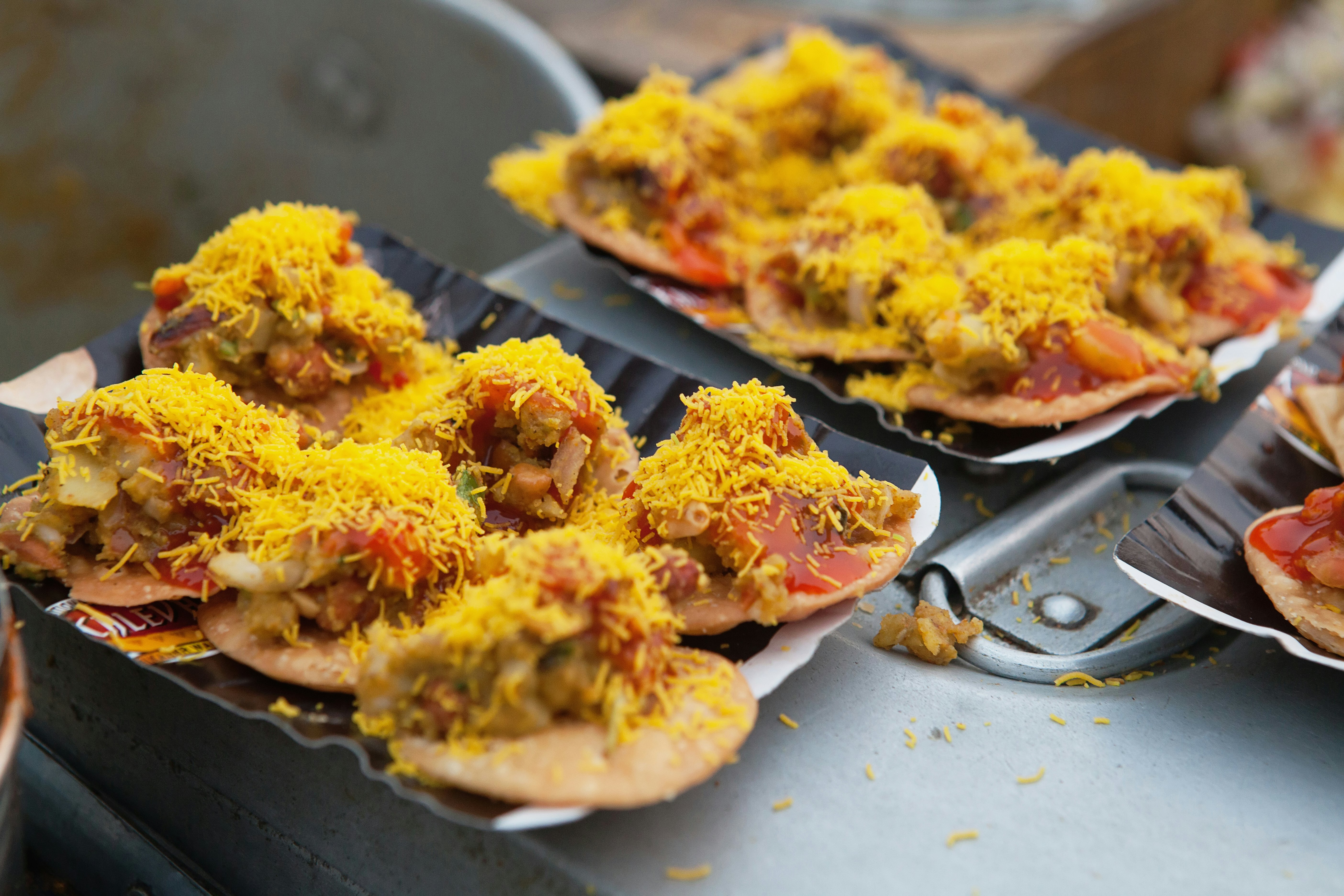
Vegetarians and vegans
In Varanasi, food reflects the city’s deep connection with Hinduism, and is predominantly vegetarian. Among many dominant caste Hindus, particularly Brahmins, vegetarianism is considered a symbol of purity. Over time, this belief has shaped household meals in Hindus and influenced street-food culture and restaurant menus; vegetarianism is thus a deeply embedded expression of hierarchy.
Vegans will have more of a challenge navigating the Varanasi food scene, since dairy products like milk, butter and yogurt are fundamental to North Indian cooking, and widely used even in dishes that appear to be plant-based. If you’re strictly vegan, it’s worth double-checking anything you order with vendors or restaurant staff, as many traditional recipes incorporate dairy by default.
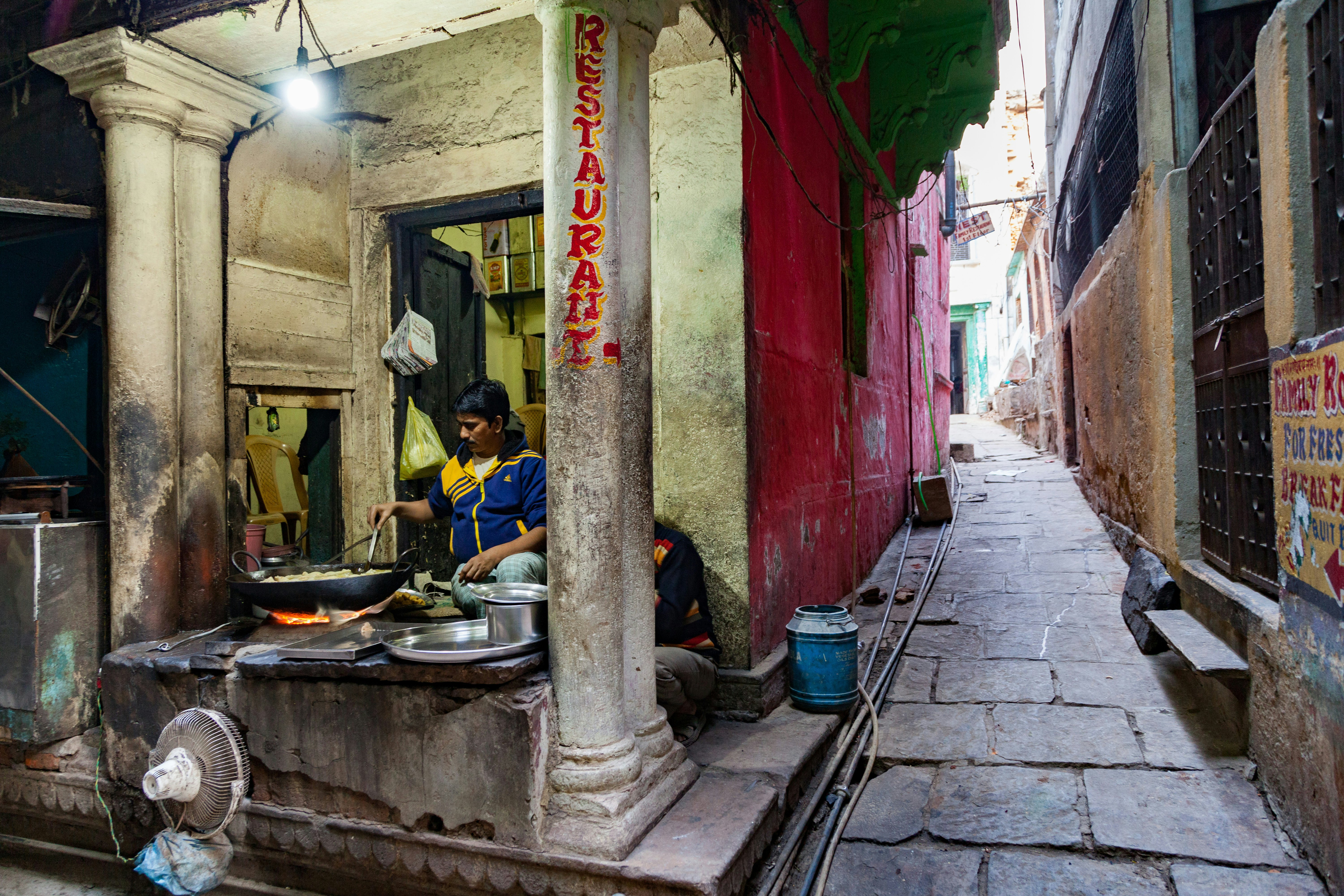
A year in food in Varanasi
Summer (April–September)
During these hot, sticky months, visitors want to hydrate themselves with summer refreshments and prefer light meals. Look out for icy treats like kulfi (traditional Indian ice cream flavored with saffron or pistachio), gola (shaved ice drizzled with colorful syrup) and thirst quenchers like shikanji (fresh lime water with salt and sugar). Fruit carts overflow with seasonal delights like mangos, watermelons and melons, often enjoyed whole or as refreshing juices. In its various sweet and fruity versions, lassi (thick, creamy yogurt blended with sugar and milk) is a go-to treat, too.
Winter (October–March)
Winters in Varanasi are cold and misty, especially in the early mornings and evenings – and this season is when the city’s culinary scene comes alive. Locals warm up with cups of strong, spiced chai (tea) and a crisp slice of malai toast. Winter-exclusive delights like malaiyo and chooda matar are the season’s favorites. For heartier fare, traditional dishes like baati chokha are perfect; those with a sweet tooth will love gaajar ka halwa (a carrot-based dessert) and til laddoo (sesame seed balls) – especially during festivals.








